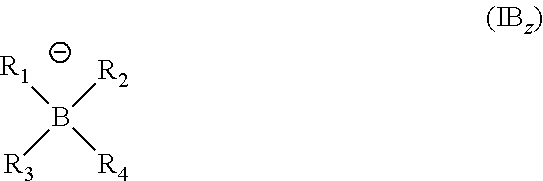Method of providing lithographic printing plates
a technology of lithographic printing and lithography plate, which is applied in the field of providing lithographic printing plate, can solve the problems of incompleteness, incompleteness, and reduced cross-linking/polymerization extent, so as to improve processing, avoid heating, and harden the imaged area
- Summary
- Abstract
- Description
- Claims
- Application Information
AI Technical Summary
Benefits of technology
Problems solved by technology
Method used
Image
Examples
embodiment 1
[0129]A method of providing a lithographic printing plate comprising:
[0130]A) contacting an infrared radiation-imaged negative-working lithographic printing plate precursor with a processing solution having a pH less than 9 and comprising a UV photoinitiator, to provide a lithographic printing plate, and
[0131]B) floodwise exposing the lithographic printing plate with UV radiation.
embodiment 2
[0132]The method of embodiment 1 wherein the processing solution has a pH of from about 4 to about 7.
embodiment 3
[0133]The method of embodiment 1 or 2 wherein the lithographic printing plate is heated prior between steps A and B.
PUM
| Property | Measurement | Unit |
|---|---|---|
| weight % | aaaaa | aaaaa |
| wavelength | aaaaa | aaaaa |
| pH | aaaaa | aaaaa |
Abstract
Description
Claims
Application Information
 Login to View More
Login to View More - R&D
- Intellectual Property
- Life Sciences
- Materials
- Tech Scout
- Unparalleled Data Quality
- Higher Quality Content
- 60% Fewer Hallucinations
Browse by: Latest US Patents, China's latest patents, Technical Efficacy Thesaurus, Application Domain, Technology Topic, Popular Technical Reports.
© 2025 PatSnap. All rights reserved.Legal|Privacy policy|Modern Slavery Act Transparency Statement|Sitemap|About US| Contact US: help@patsnap.com


